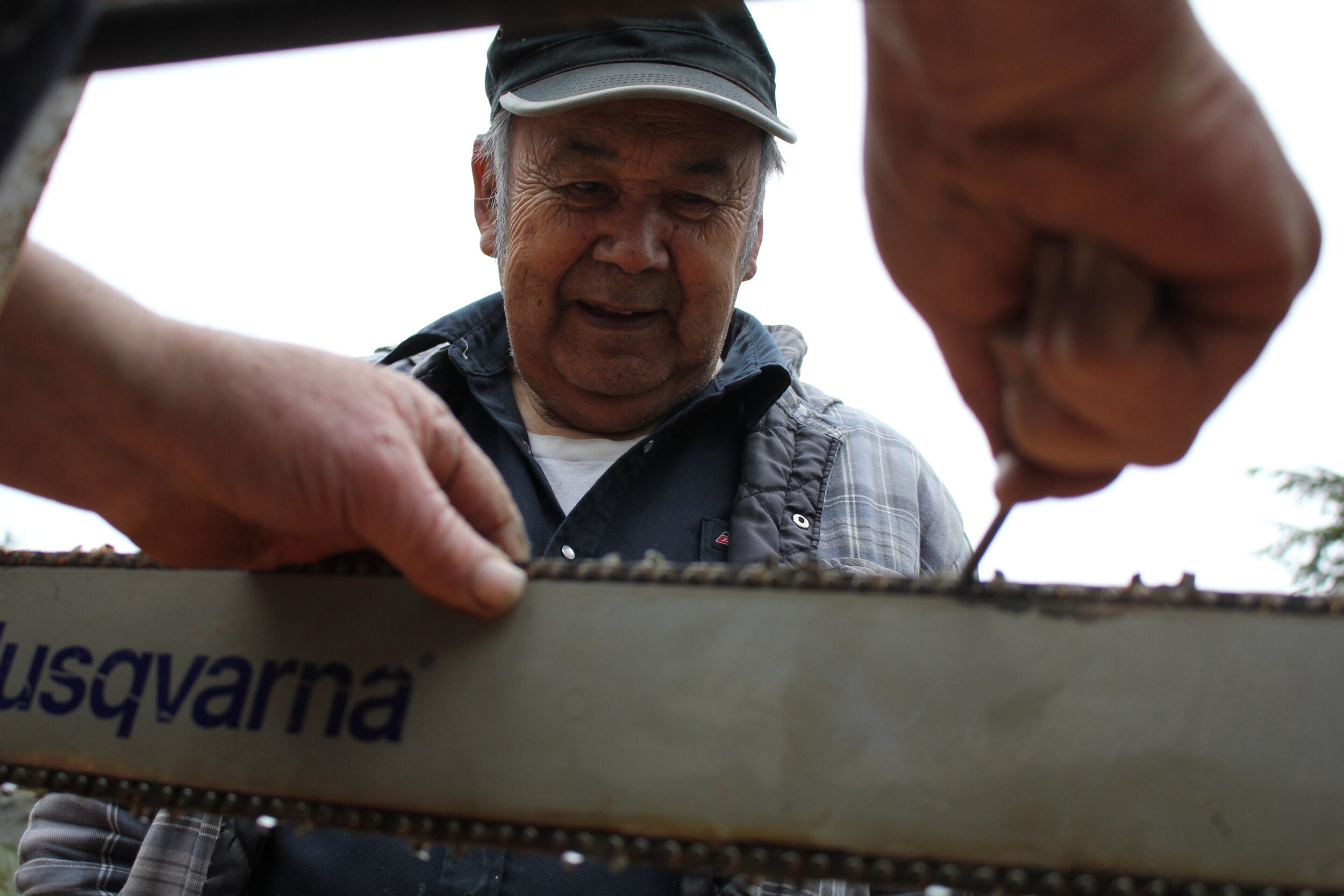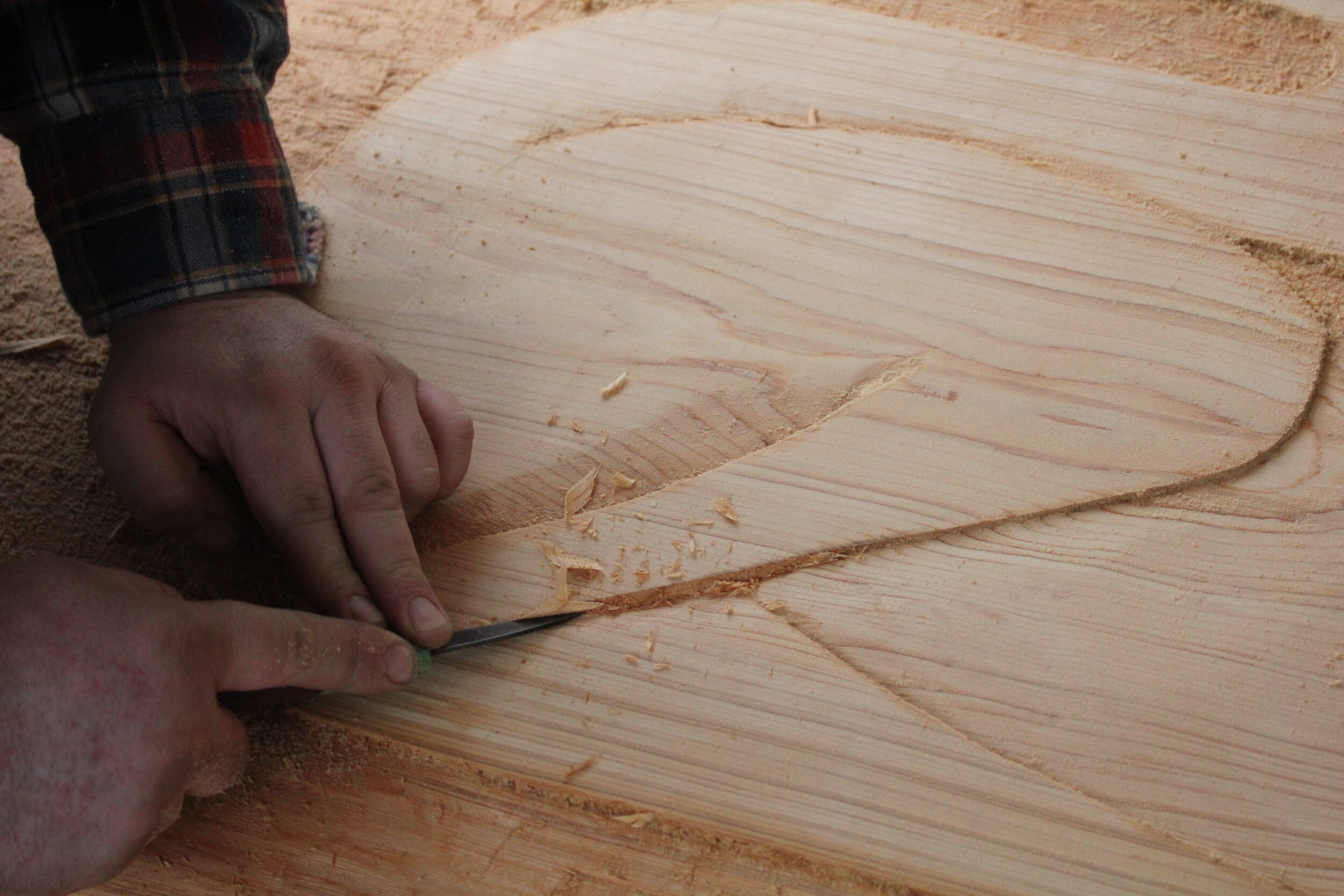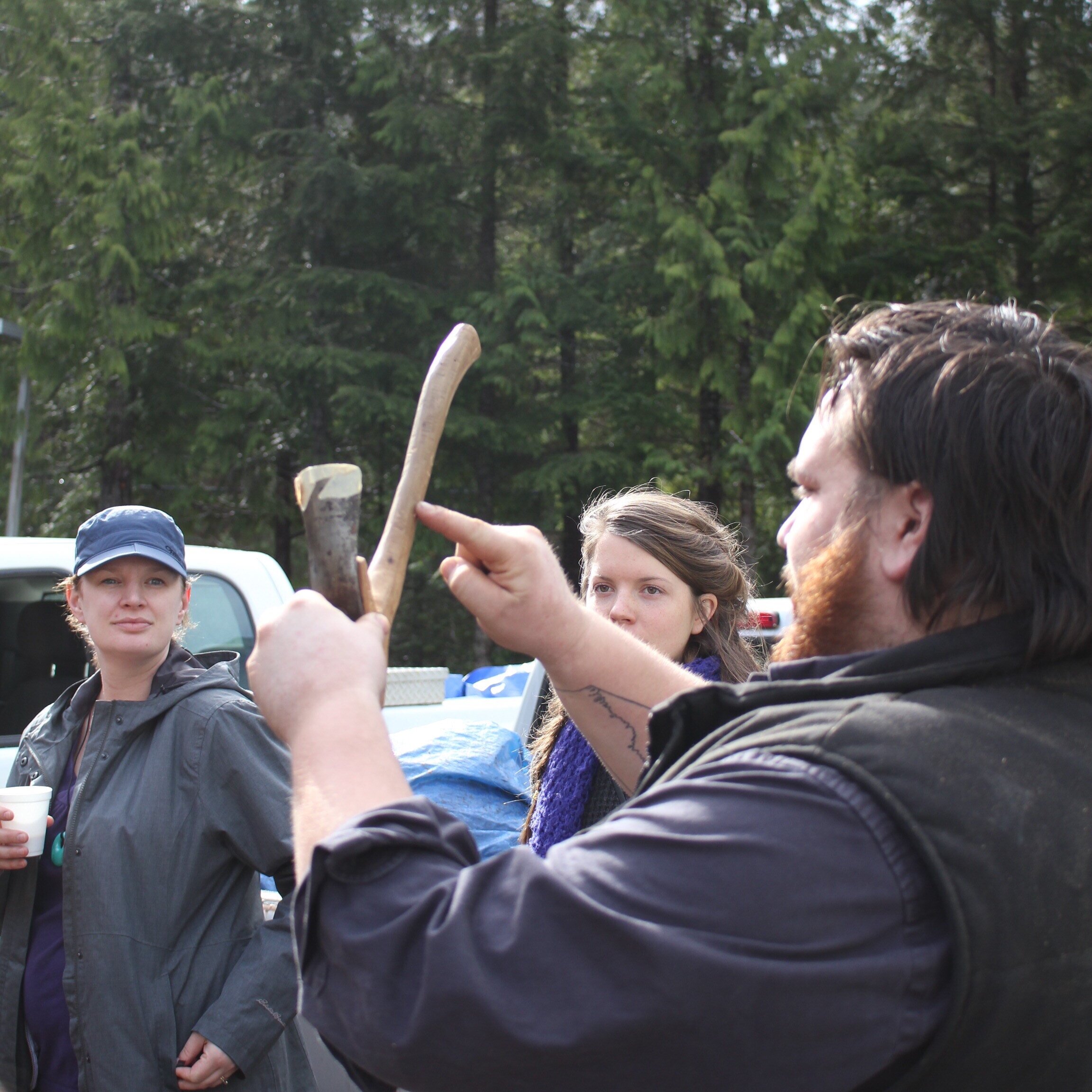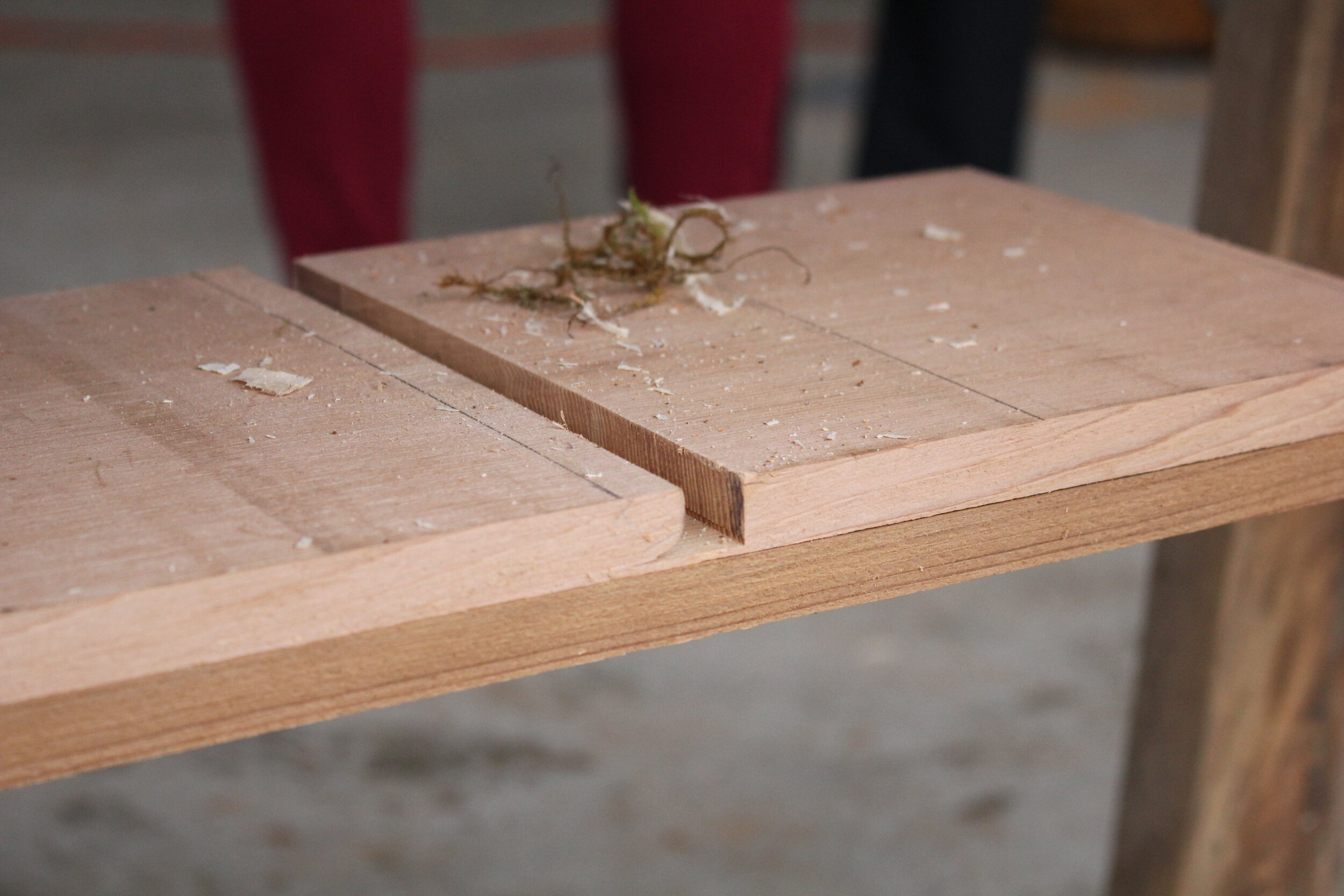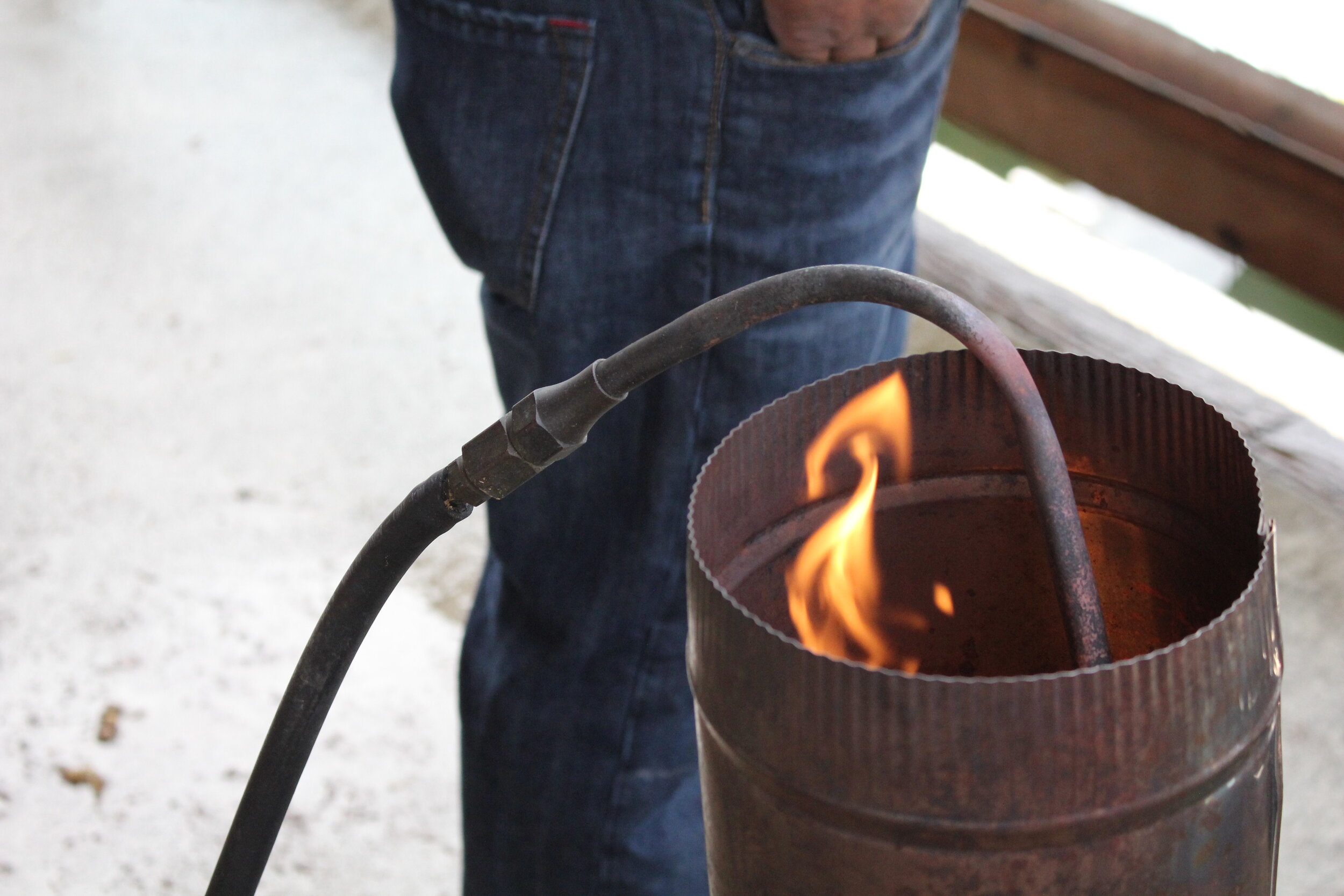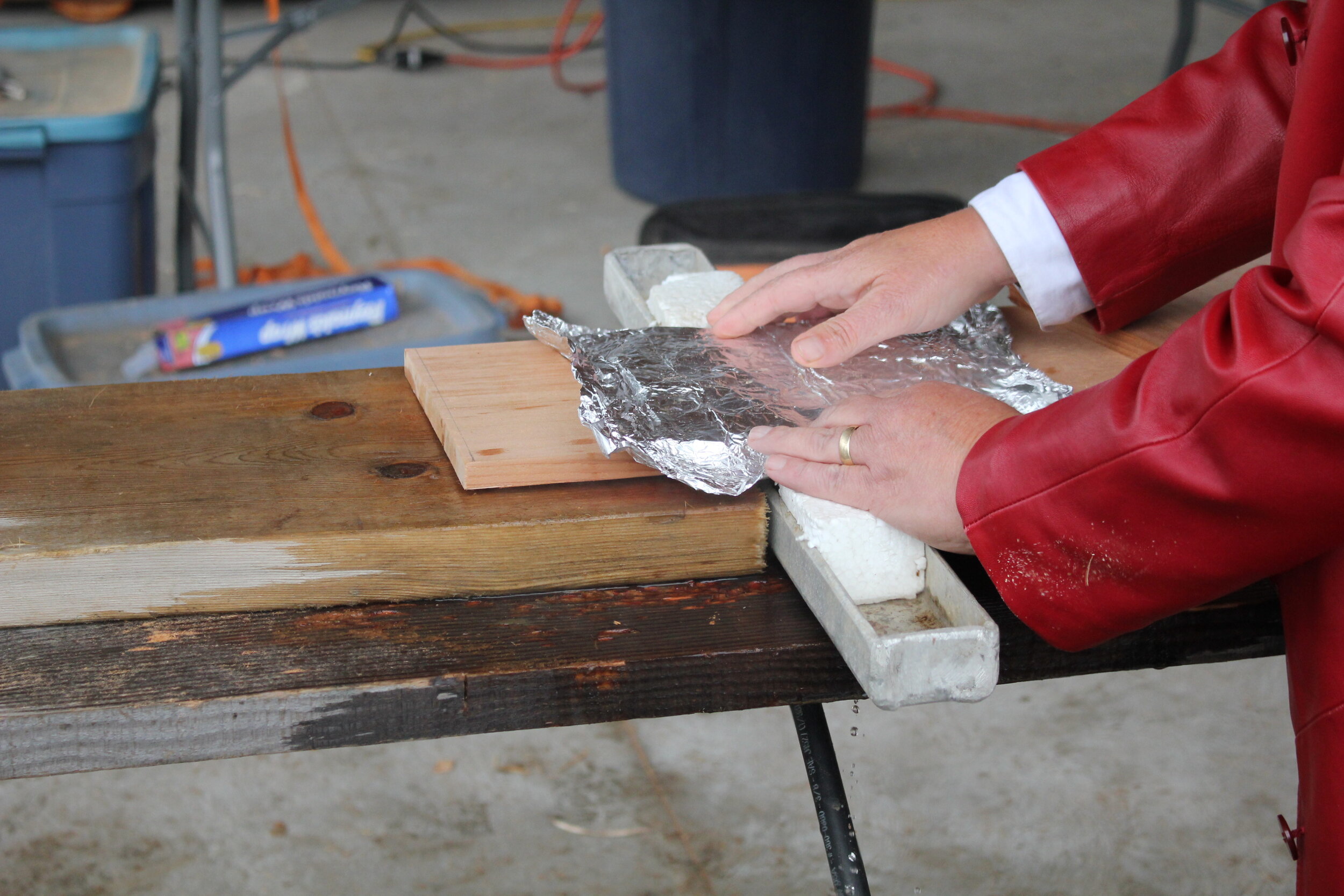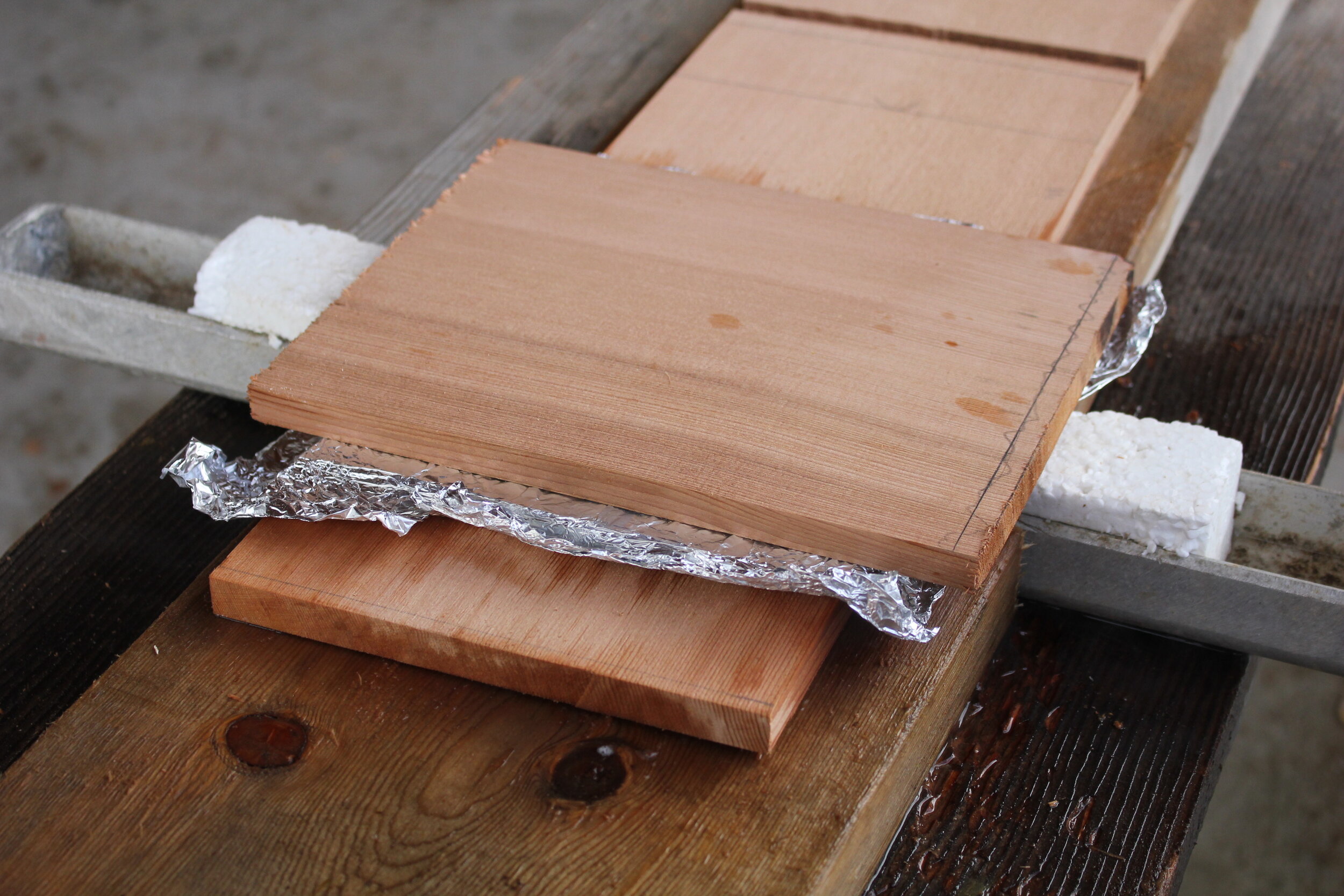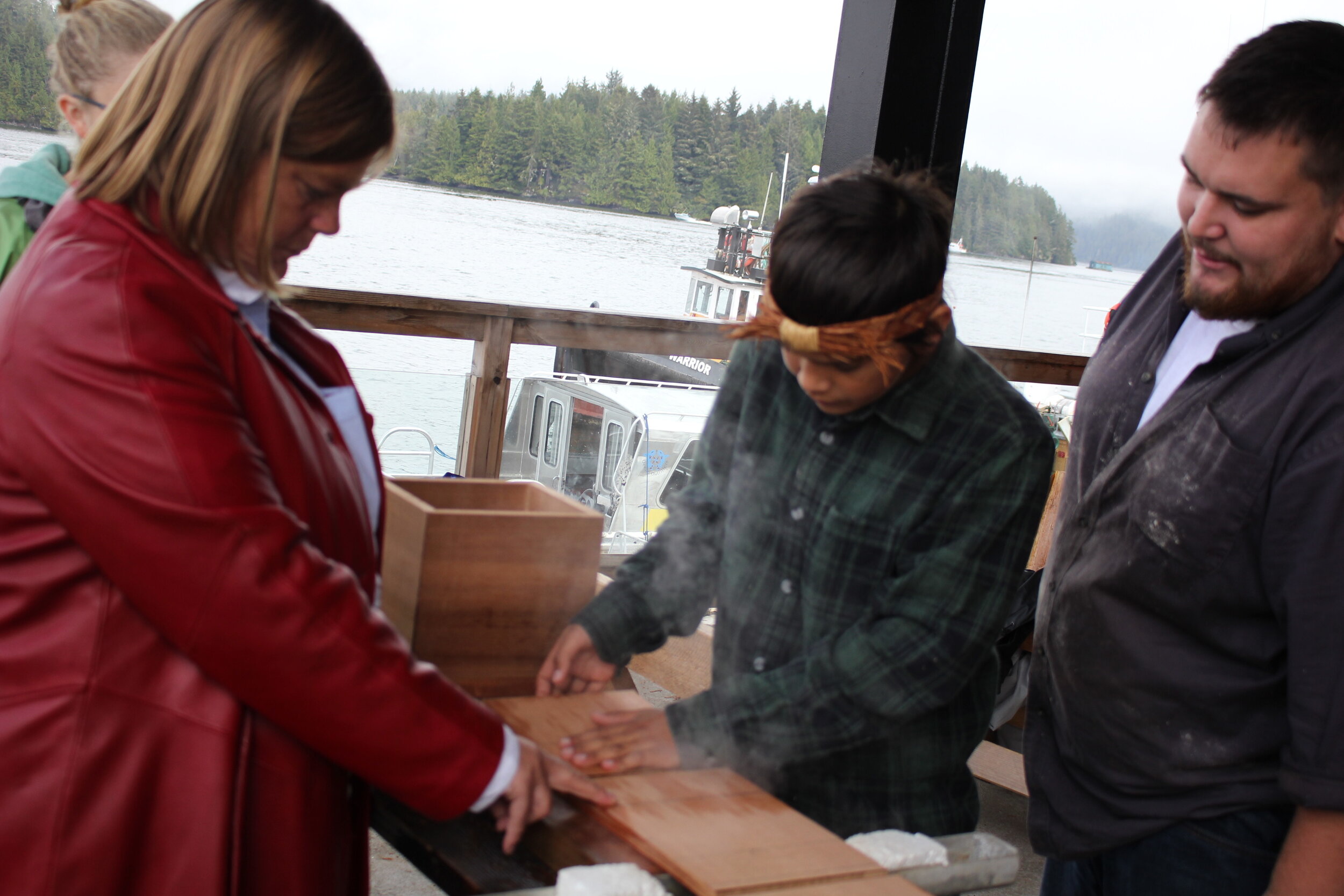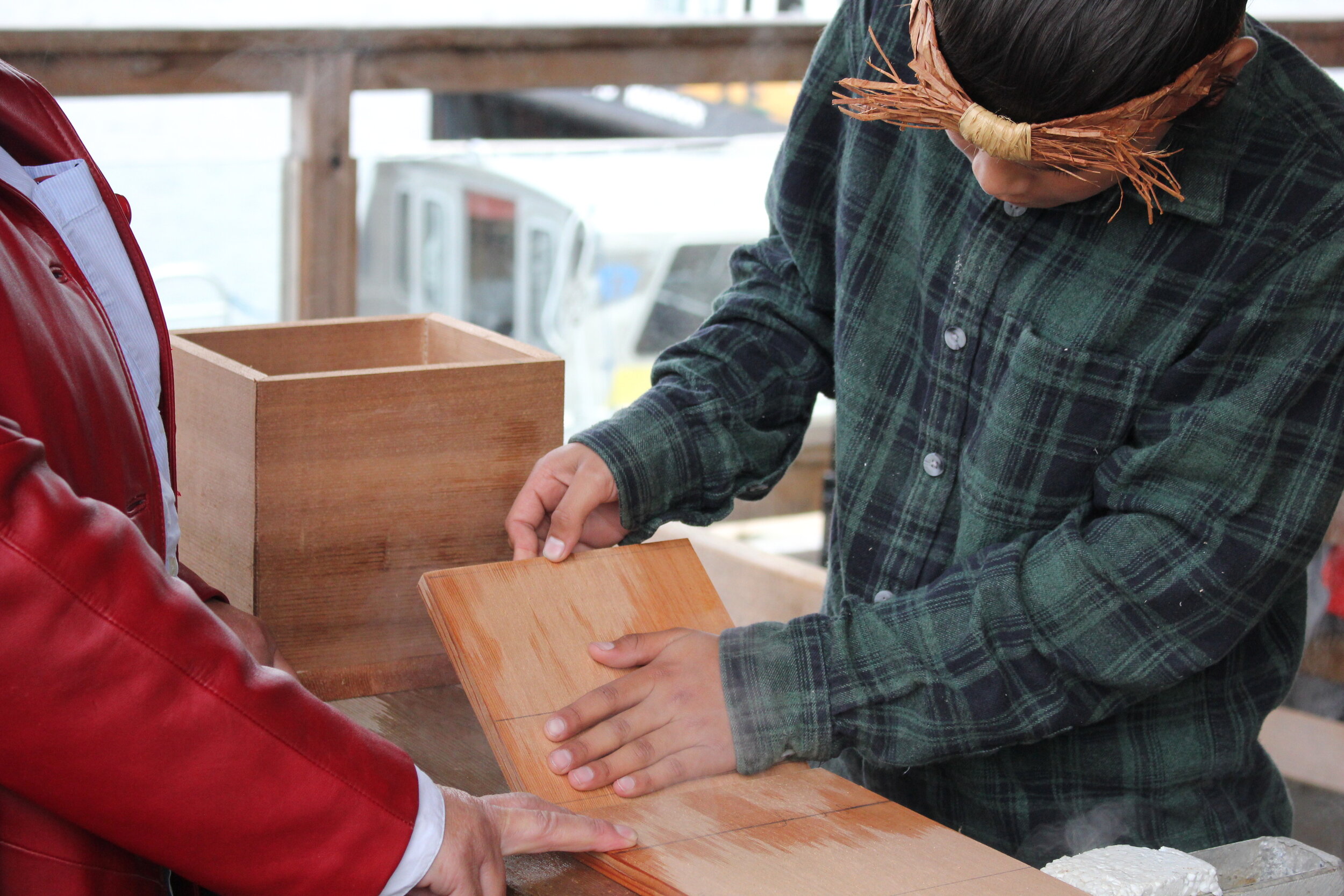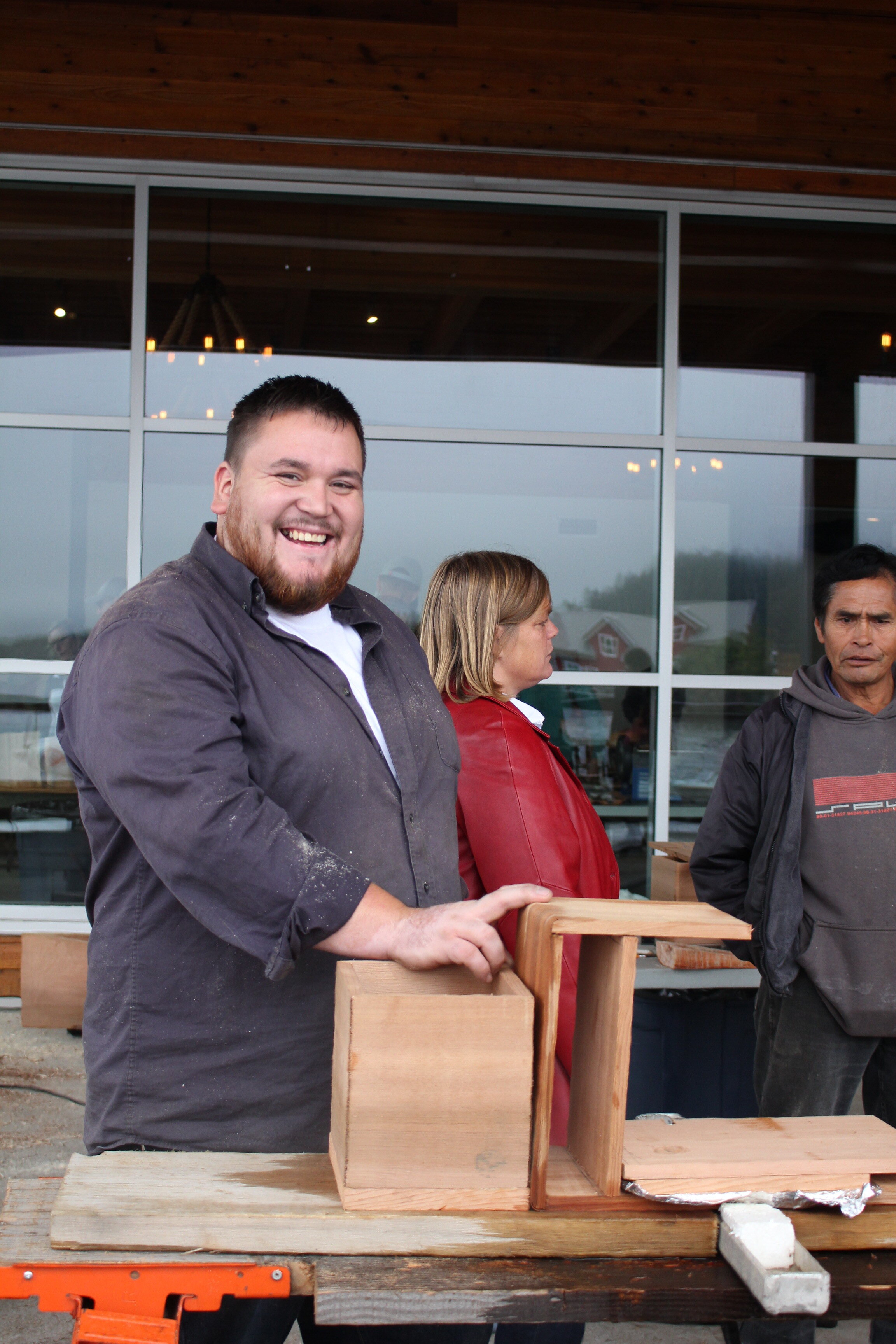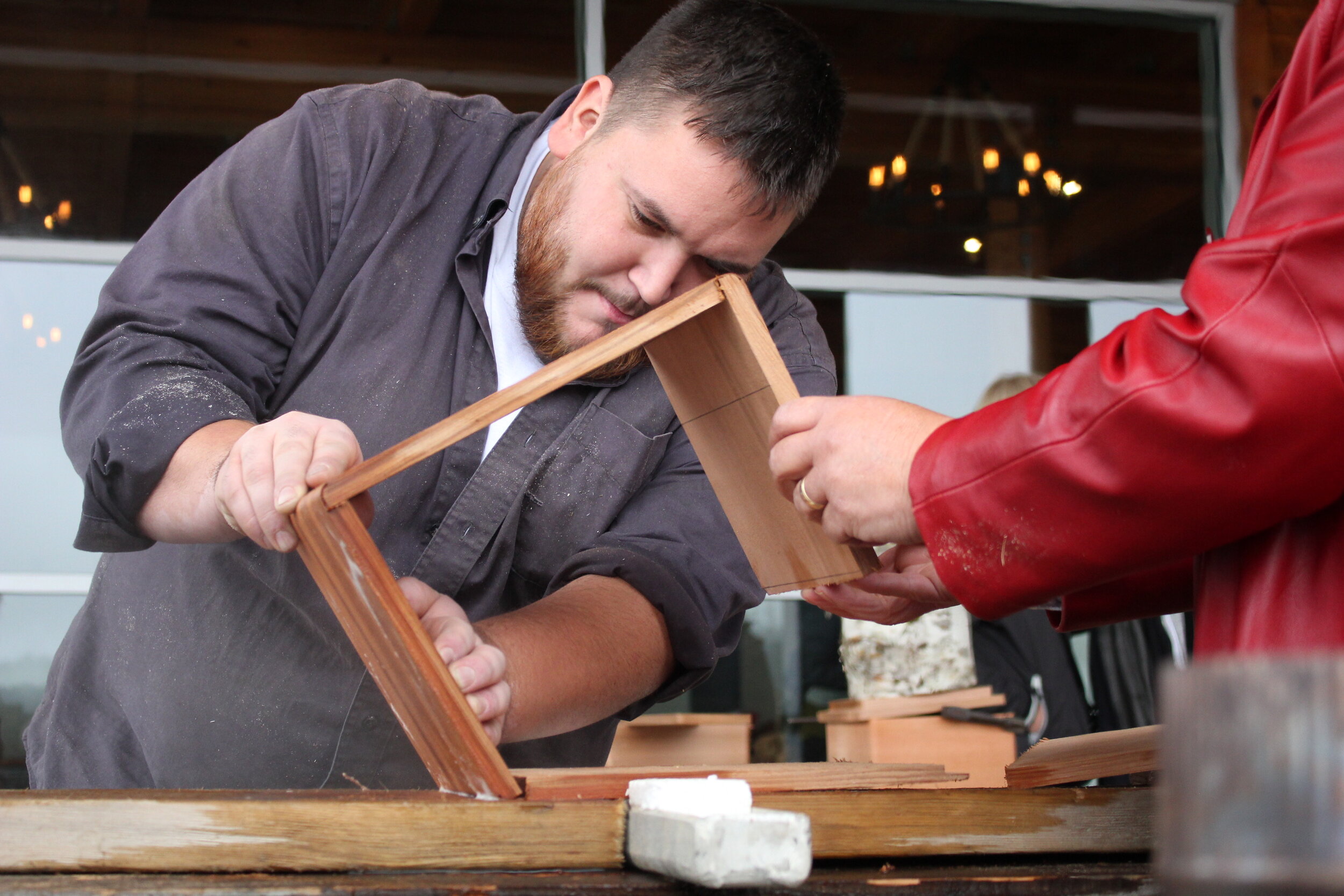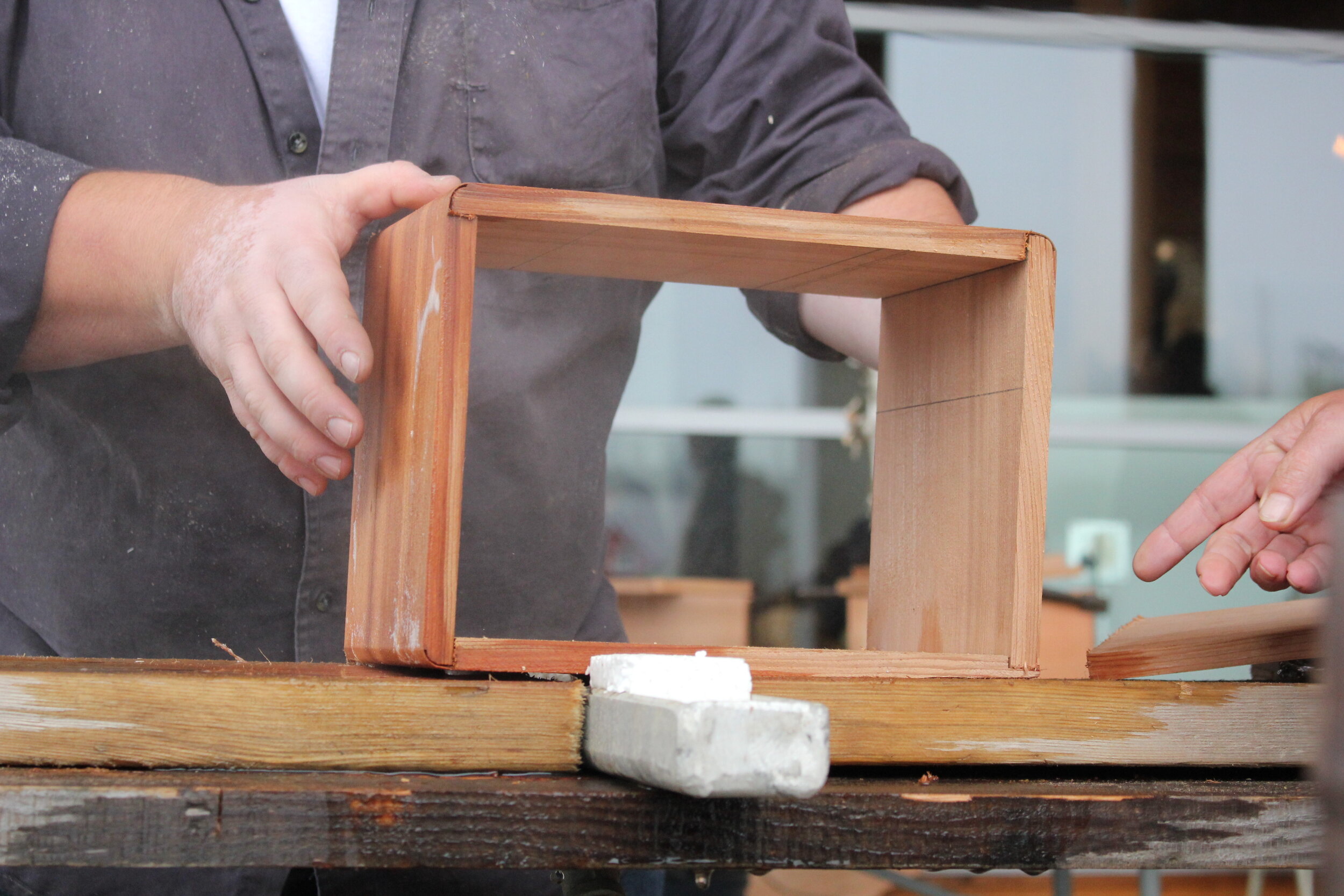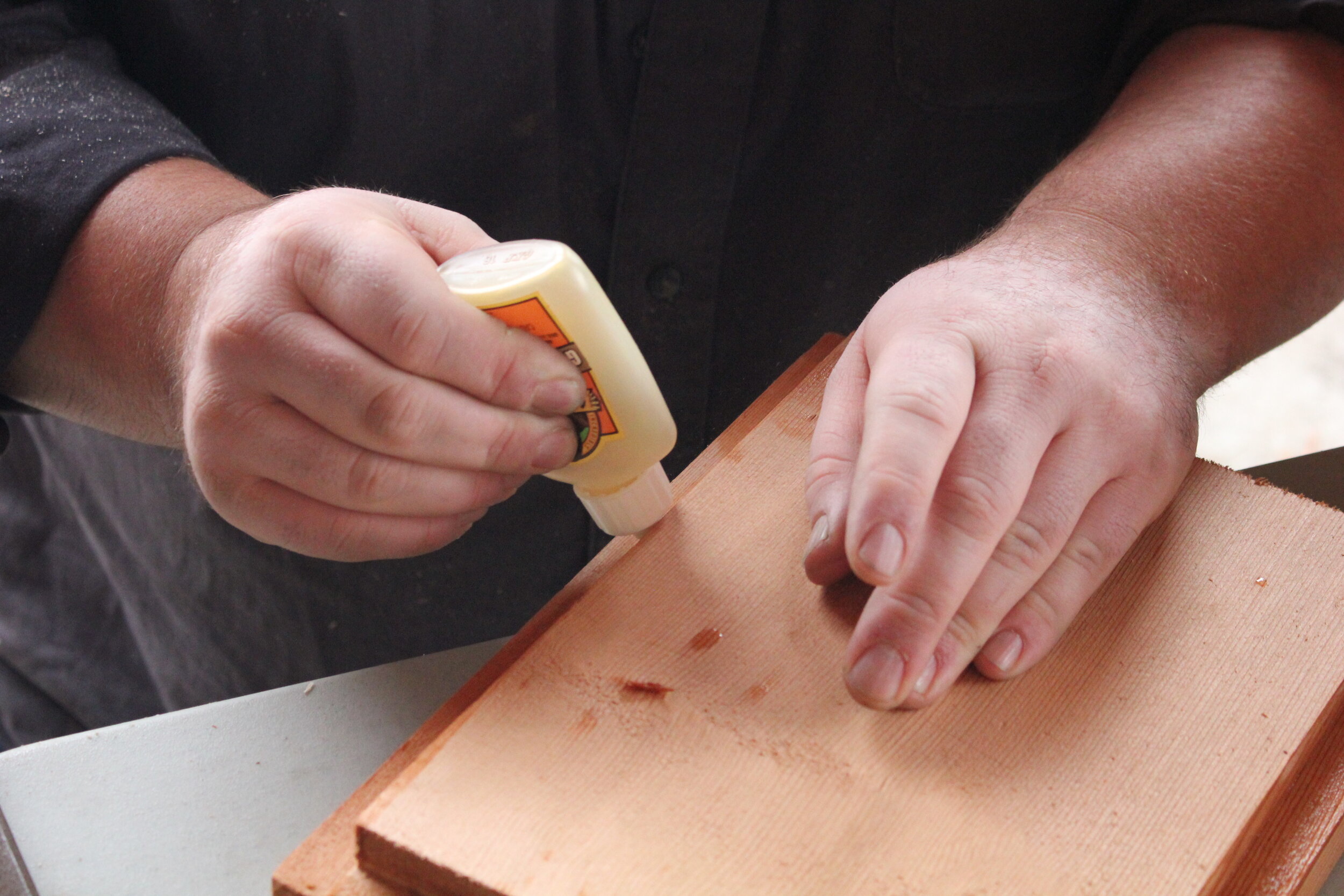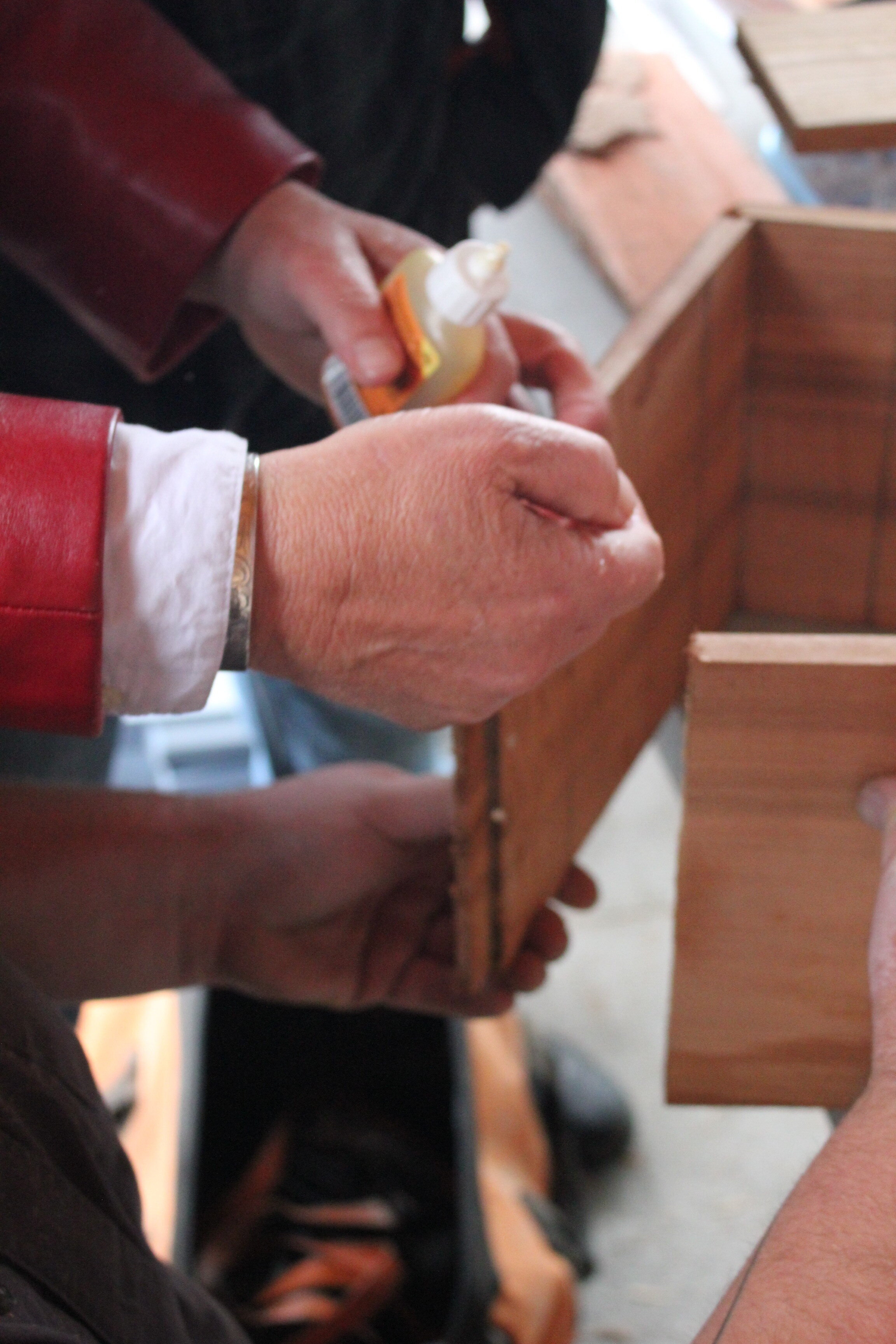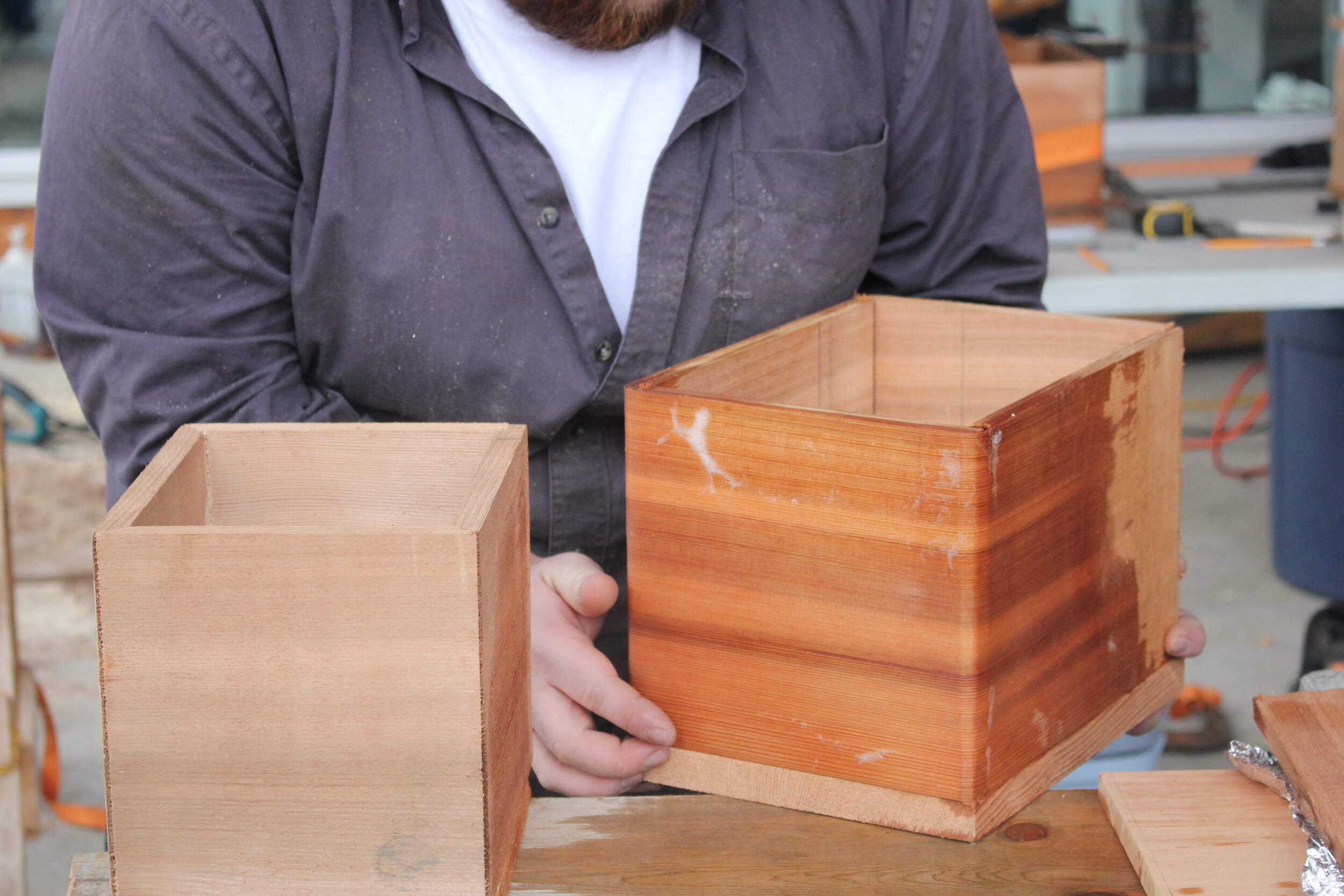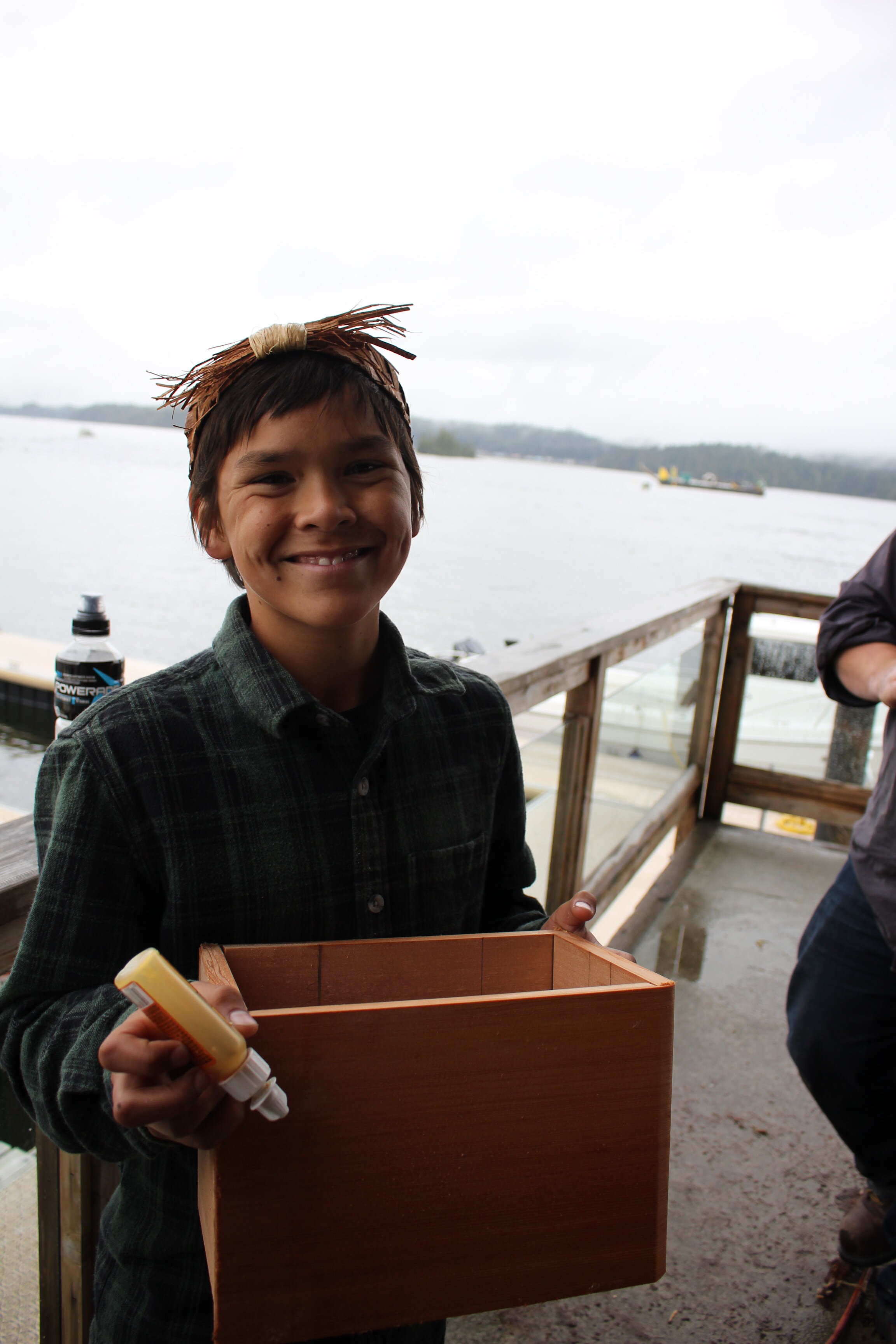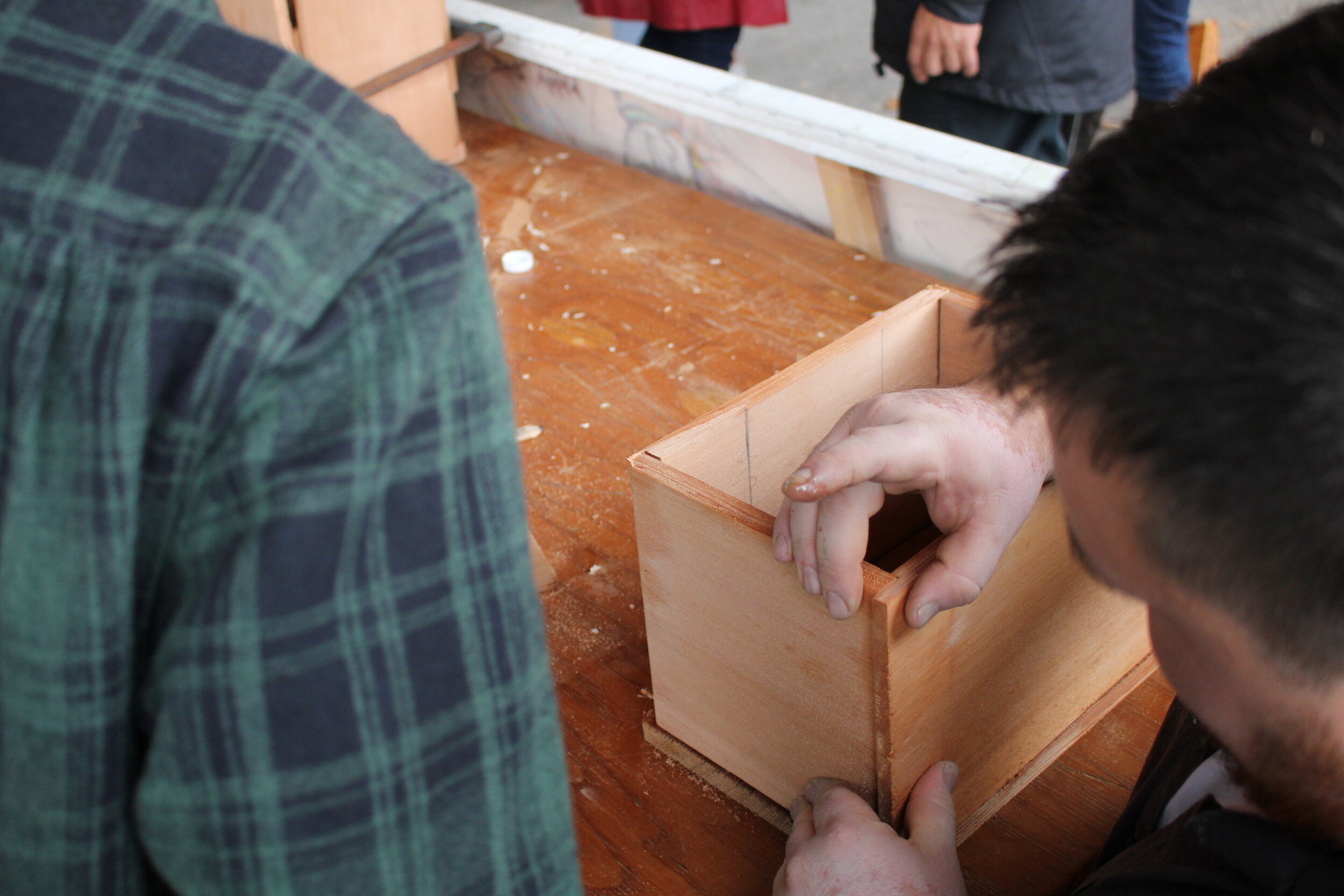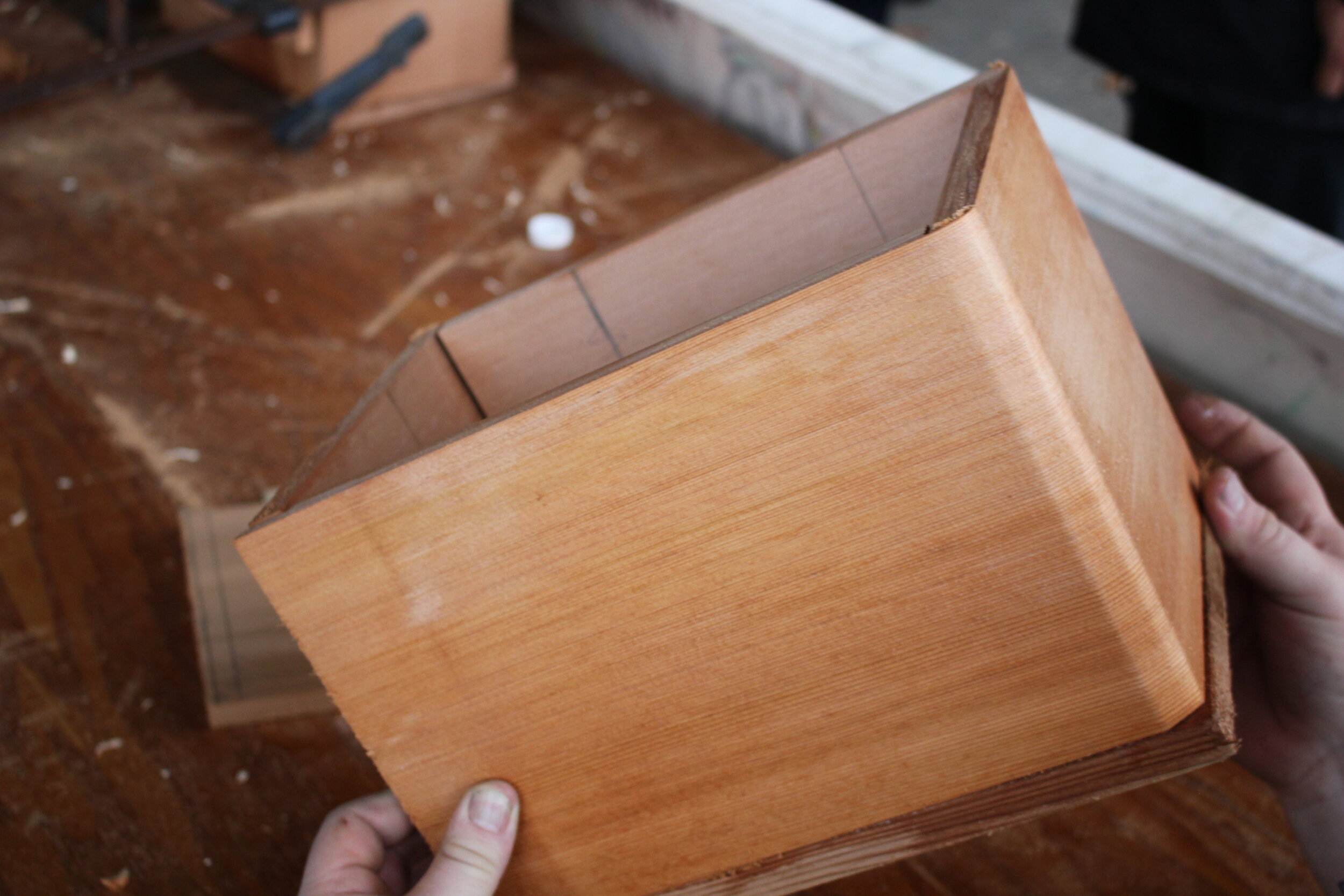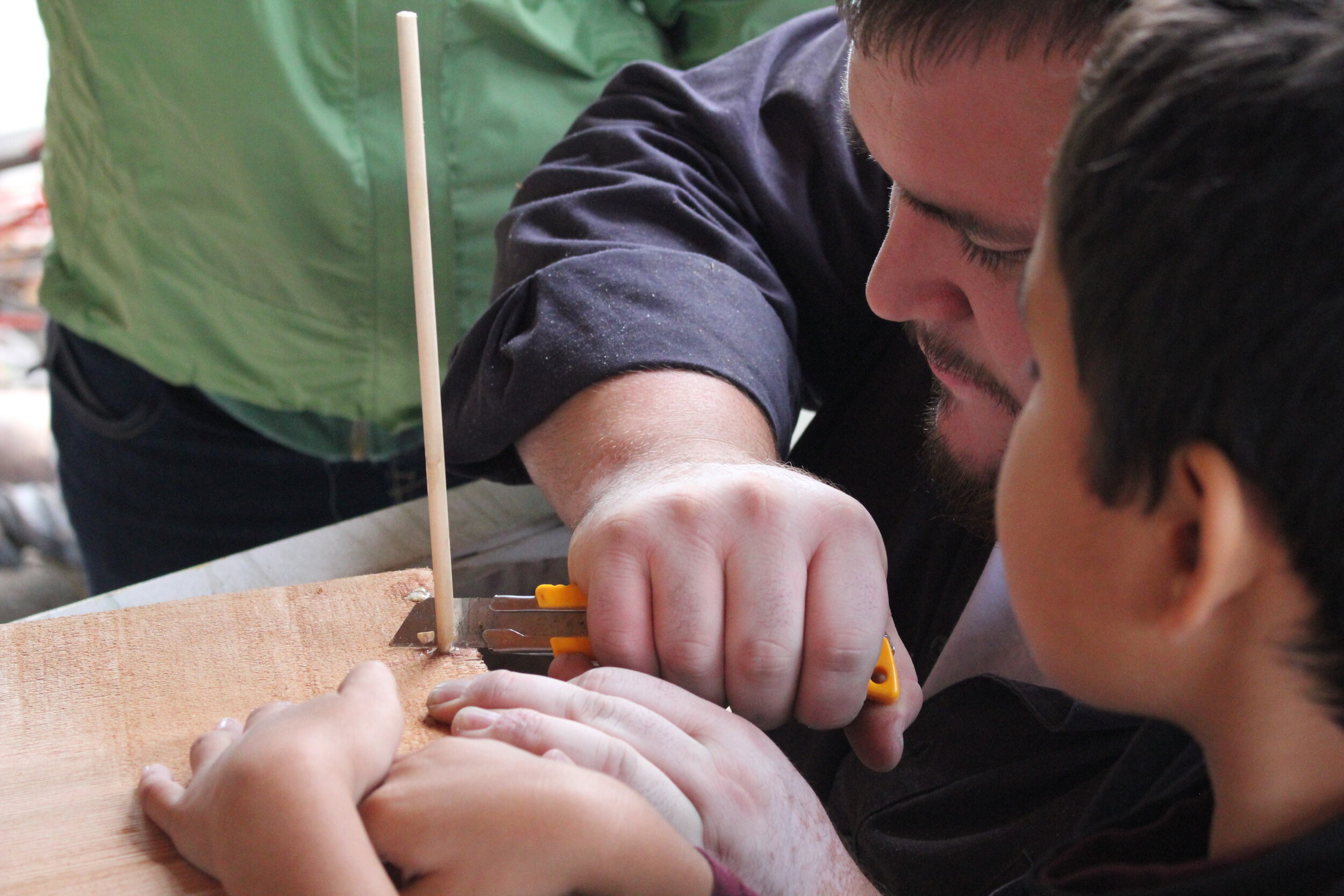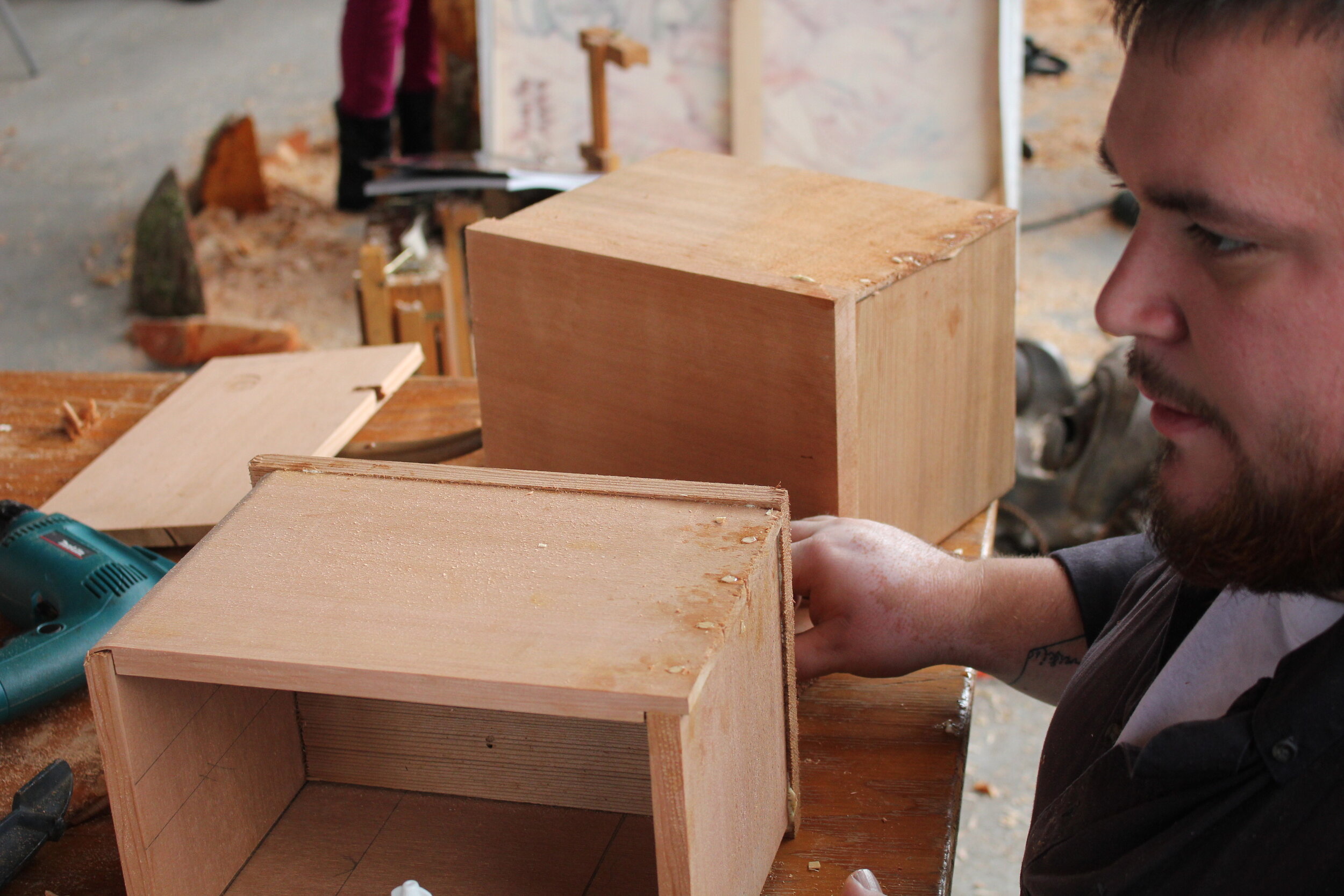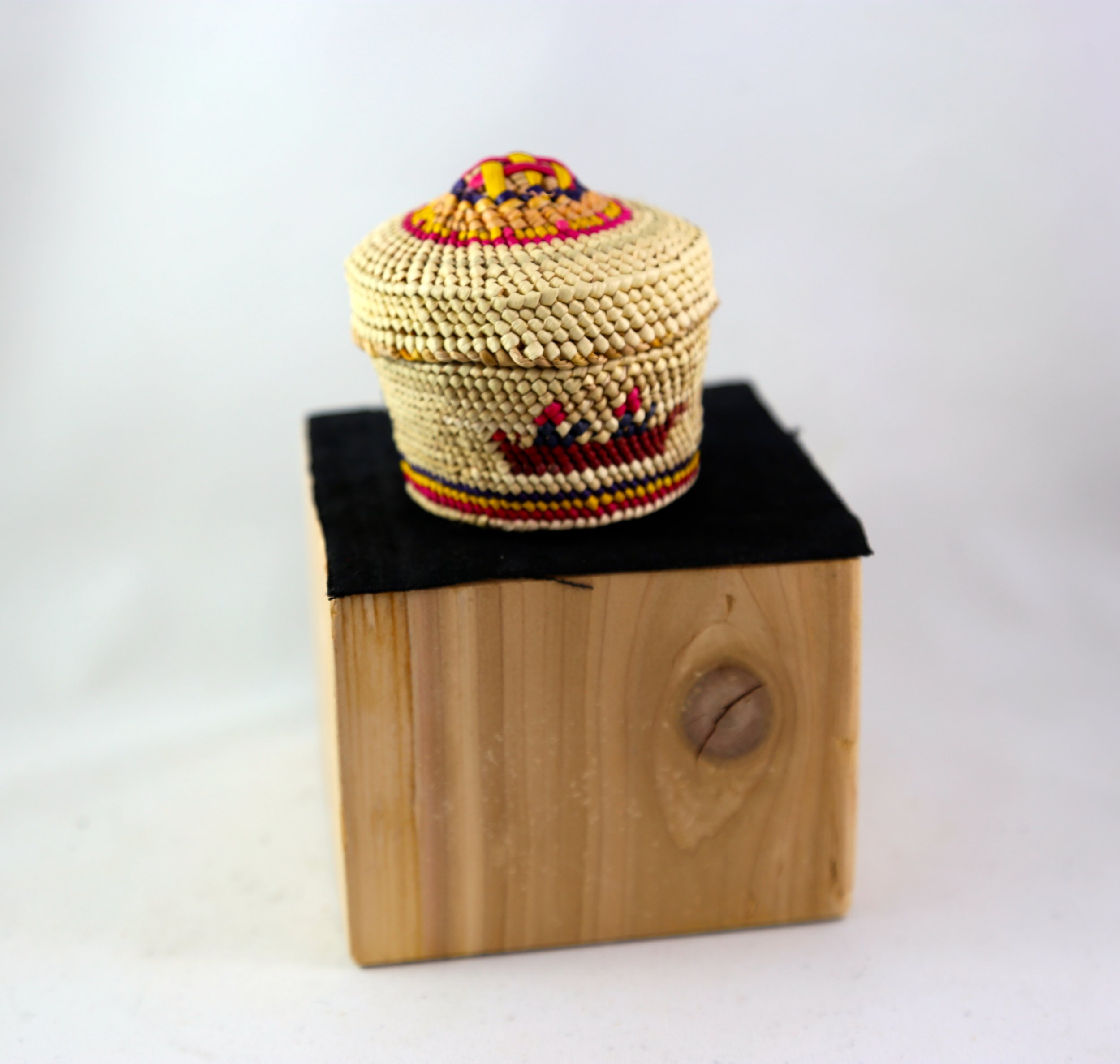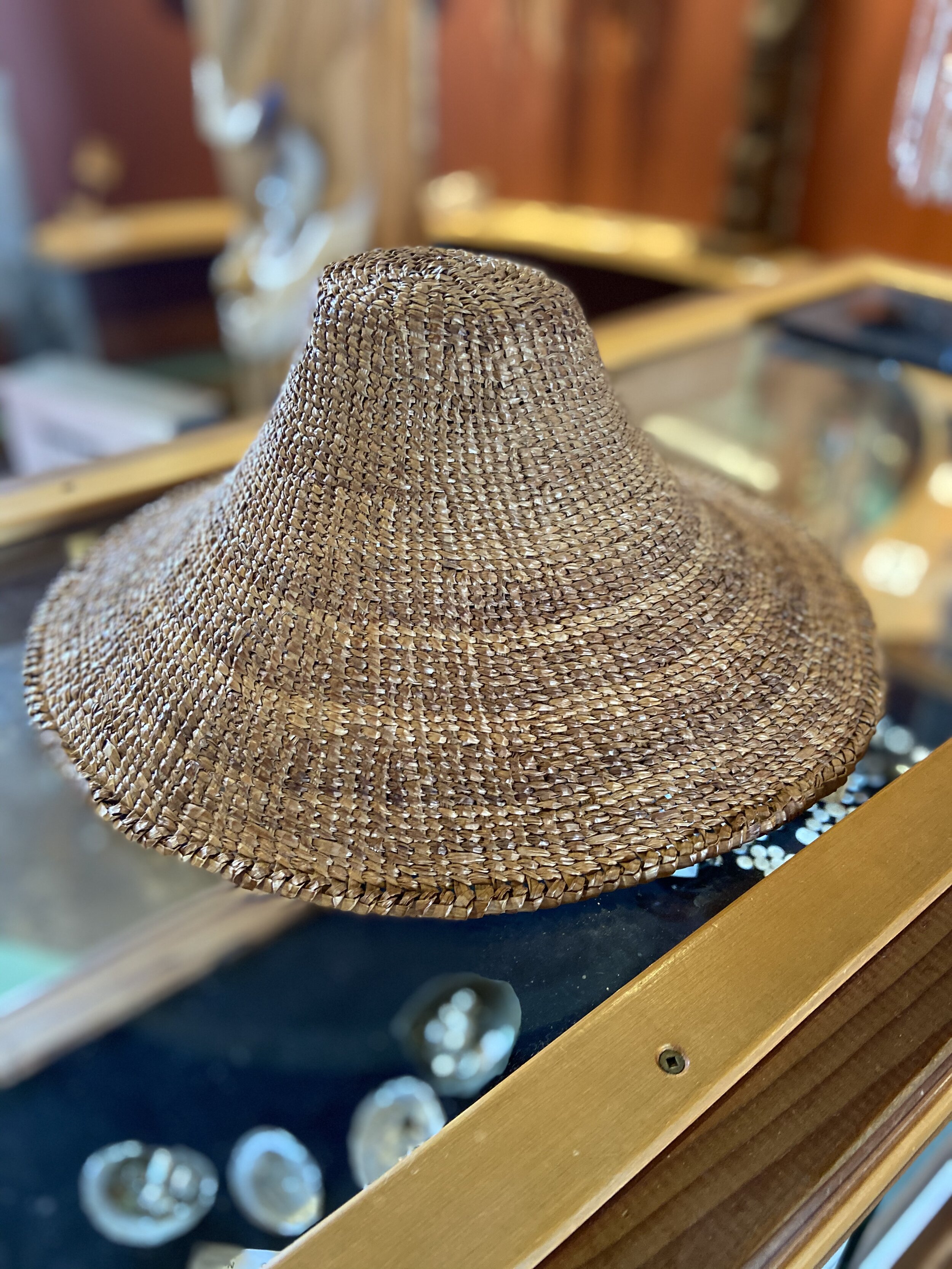Working with Wood
Carving
Traditionally, tools were made up of beaver teeth chisels, stone mauls and sandpaper from dogfish skin. Metal was the most valued early trade item from early European explorers. Now chainsaws, metal hook knives, adzes, and chisels make up the carver’s modern tool kit.
The rich forests of the Pacific Northwest have allowed a multitude of carved products. Springy hardwoods such as Pacific Yew is used primarily for paddles. Clear grained Western Red Cedar is a favourite for masks, house posts, houses boards and a must for the iconic ocean-going dugout canoes for which the Nuu-chah-nulth are famous. The mild flavour of the wood of Red Alder makes it popular for serving bowls. Additionally, Red Alder bark is used as a red dye for woven projects.
bentwood boxes
As beautiful as they are technically marvellous, the bentwood box is an iconic Pacific Northwest technology and art. Created from a clear, tight-grained board of red or yellow cedar and bent into a box shape with specially cut groves and the use of steam to make the wood flexible. This box shape is pegged at the ends and pegged and glued onto a base. Because of the continuous length of board and the carefully pegged and grooved ends these boxes can be made watertight. This made them an essentially part of west coast living a hundred years ago, when travel by open canoes was common. Bentwood boxes also serve an important symbolic uses, such as mortuary boxes and storage for ceremonial regalia.
Hjalmer Wenstob and daughter Huumiis “pull” strips of red cedar bark.
Freshly pulled cedar tree.
weaving & Basketry
Weaving and basketry make up an important component of Nuu-chah-nulth daily life.
Traditional Nuu-chah-nulth clothing is woven of the bark of yellow and red cedar. Bark is harvested by “pulling” long strips in the late spring when the sap is running. A prayer is made to thank the tree for its sacrifice. These strips leave tell-tale scars on the trees that last for the life of the tree. The oldest recorded scar on a still living tree is found in the traditional territory of Tseshaht First Nation (c̓išaaʔatḥ) (a Nuu-chah-nulth people) – the scar dates from 1200 AD.
Waterproof hats are made of yellow cedar and spruce roots often with detailed depictions of whale hunts and other images worked into them or painted on their surface.
Baskets were made for a multitude of purposes and with a variety of styles of weave. Examples, include large open-weave red-cedar clam harvesting baskets and the delicate grass covered glass bottles and shells found in the tourist trade used for no other purpose than to wonder at the dexterity and skill of their weaver.




